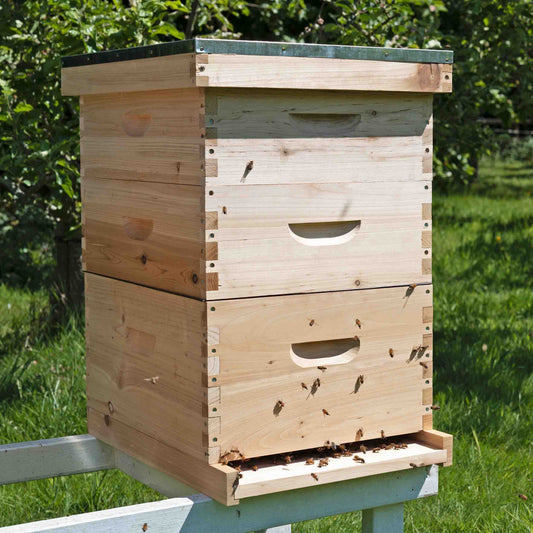
Using drone comb to control varroa in honey bees
Varroa mites are a parasitic mite that attacks and feeds on honey bees and is one of the most damaging honey bee pests in the UK. Varroa mites are not native to the UK. They were accidentally introduced to the UK in early 1990s and a significant mite infestation can lead to the death of a honey bee colony so managing their population in a hive is a crucial part of bee keeping. There are serval ways of managing varroa in a hive.
Three approaches to control varroa in honey bees:
- Physically removing
- Organic acids (such as oxalic acid)
- Varroa treatments (ApiVar, Apistan)
You don't have to do only one. It's typical to use all three methods to control varroa. Each approach has it's pros and cons and should be done at different times of the year.
Physically removing:
The most common method to physically remove varroa is by removing brood comb. This method is as simple as it sounds. Varroa target sealed brood cells to reproduce and they favour drone brood as they are larger and sealed for longer compared to works. By simply removing sections of drone brood a bee keeper can remove a large part of breeding varroa population in a hive.
How to do it:
Bees will tend to place drone brood towards the bottom of the frame as the cells need to be larger.
- By placing a super frame in your brood box bees will naturally make drone brood underneath the super frame as there is the extra space. Drone comb foundation can also be brought so that you don't have to tie up a super frame in your brood box and the bees have less wax to draw out.
- Once the drone brood is capped shake the bees off the frame and remove the drone brood by prying it off with a hand.
When to do it:
This method should be done in spring when the bees are naturally growing their size. For the best results the drone brood should be removed about 21 days after being capped.


